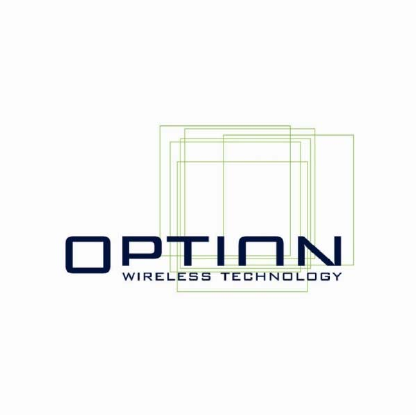Option OGE0301E Multimode GSM/GPRS/EDGE/UMTS/HSDPA PCMCIA Card User Manual safety manual GE0301 E
Option NV Multimode GSM/GPRS/EDGE/UMTS/HSDPA PCMCIA Card safety manual GE0301 E
Option >
Contents
- 1. User Manual
- 2. Annex to User Manual
- 3. Users Manual
Users Manual

Safety manual:
Option Data Card

About this document
Overview and Purpose
This document describes the safety measurements that have to be taken into account
when using an Option Globetrotter data card.
Confidentiality
All data and information contained or disclosed by this document is confidential
and proprietary of Option NV, and all rights therein are expressly reserved. By
accepting this document, the recipient agrees that this information is held in
confidence and in trust and will not be used, copied, reproduced in whole or in
part, nor its contents revealed in any manner to others without prior and written
permission of Option NV
Version History
Date Release Version Author(s) Revision(s) Remarks Phase
15/09/05 1.0 –
Draft 1 RoelT Initial version 1.0.0
6/10/06 1.1 JoeriB Final version
9/8/07 1.2 JoeriB Adapted version acc to
“Option GlobeTrotter
Express HSUPA
and GT MAX HSUPA
User Guide”

Table of contents
1. Introduction...............................................................................................................3
2. Safety Measurements................................................................................................3
General recommendations for use.......................................................................3
Extreme temperatures..........................................................................................3
Explosive atmosphere...........................................................................................3
Blasting areas – construction sites.......................................................................4
Do not use on aircraft...........................................................................................4
Do not use in hospitals..........................................................................................4
Interference from radio signals...........................................................................4
Immunity to interference.....................................................................................4
Cardiac pacemakers, implanted defibrillators & other medical......................5
Hearing devices.....................................................................................................5
Children.................................................................................................................5
Driving...................................................................................................................5
SIM cards...............................................................................................................5
Accessories.............................................................................................................5
Traveling................................................................................................................6
Safe distance..........................................................................................................6
Supply voltage.......................................................................................................6
1. Introduction
When using the Option datacard, it is necessary to pay attention to all safety aspects
described in this document. Using these guidelines is mandatory to provide certainty of
the safe use of the card for the end-user. Breaking these rules may be dangerous or
illegal.
2. Safety Measurements
Please read the following guidelines carefully. Not following these guidelines can cause harm to the card,
yourself or other persons.
General recommendations for use
Always treat your product with care and keep in a clean and dust-free place. Do not expose your product to
open flames or lit tobacco products.
Do not expose to liquid, moisture or humidity. Do not expose the datacard to rain, or other liquids.
Do not drop, throw or try to bend your product.
Do not paint your product.
Do not attempt to disassemble your product. Doing so may bedangerous and it will void the
warranty.
Do not touch the antenna unnecessarily.
Traveling
Handle the card with care while traveling. It is recommended to remove
the card from the laptop.
Ambient temperatures
Do not expose the datacard or the antenna to ambient temperatures
beyond the range of - 5 to +35degrees Celsius.
Explosive atmosphere
Turn off your PC in any area with a potentially explosive atmosphere. It is rare, but your PC could generate
sparks, which could cause an explosion or fire. Areas with a potentially explosive atmosphere are not
always, clearly marked. They include fuelling areas ( petrol filling stations ), below deck on boats, fuel or
chemical transfer or storage facilities, and areas where the air contains chemicals or particles, such as grain,
dust, or metal powders. Do not transport or store your PC and accessories in the compartment of a vehicle,
which contains flammable gas, liquid or explosives.
Blasting areas – construction sites
Turn off your PC when in a blasting area in order to avoid interfering with two-way
radios used in blasting operations.
Do not use on aircraft
Using a wireless devices on aircraft can cause interference and is illegal. If you intend to
use your laptop/PDA whilst on an aircraft, you MUST remove your the datacard before
boarding any aircraft. Do not use it on the ground without permission from the aircraft
crew.
Do not use in hospitals
Please ensure you follow any local regulations or rules. People are often asked to switch off all electronic
devices in some areas of a hospital; this is a recommendation that Option fully supports. Using a datacard
close to sensitive electronic devices could possibly result in interference. If you intend to use your PC in
such areas, you must remove the datacard.
Interference from radio signals
Option relies on advice from health authorities an relevant expert bodies about potential undesired
responses to radio emissions from datacards.
Immunity to interference
Electromagnetic interference is the disturbance of the normal operation of a device due to its undesired
response to radio signals from an external source. Occasionally in some situations, you may hear short
sounds coming from audio equipment such as radio or multimedia PC.
However, these audible signals do not interfere with the operation of the equipment.
The 1989 Directive from the European Commission ( 89 / 336 / ECC ) 13 governing all forms of electronic
equipment concerns interference that such equipment produces and its immunity to interference from
outside.
Any equipment compliant with that directive is unlikely to suffer interference. All wireless devices may get
interference, which could affect performance.
Cardiac pacemakers, implanted defibrillators & other medical implant
devices
It is possible that some datacards may interfere with some types of pacemakers or implanted defibrillators
when operated close to the implanted device. You should seek advice from your doctor that is specific to
the implant before using the datacard. Health authorities in many countries have set up advisory services
for medical devices and implants including providing advice about maintaining separation distance
between datacards or other radio frequency equipment and the implant. Option operating companies reflect
the advice given by their
relevant health authority or national advisory service and / or as a minimum indicate a separation distance
of at least 20 cm between datacards or other radio frequency equipment and the embedded device.
Hearing devices
People with hearing aids or other cochlear implants may experience interfering noises when using mobile
devices or when one is nearby. The level of interference will depend on the type of datacard, the type of
hearing device and the distance between the two. Increasing the distance between the datacard and hearing
device may reduce interference.
Children
Do not allow children to play with your datacard. They could hurt themselves or others, or could
accidentally damage the datacard. Your datacard also contains small parts with sharp edges that may cause
an
injury or which could become detached and create a choking hazard.
Driving
Do not use data card while driving; park the vehicle first.
SIM cards
To protect against damage from electronic discharge (ESD) do not touch the SIM card connectors. As a
precaution, always make sure that the datacard is already in your hand before you insert or remove the SIM
card.
Accessories
Only use Option approved accessories. Do not connect with incompatible products. When used with
accessories such as external antennas, Option can only guarantee safe and correct operation of our products
if the accessories are tested and approved by us. To comply with international safety requirements; when
using an Option approved external antenna, you must ensure that it is kept from the body at a distance
greater than 20 cm.
Safe distance
We advise the end-user to keep a minimum distance of 20 cm between him and the device.
The datacard has been thoroughly tested to comply with SAR requirements. These tests simulate the
absorption by the human body of radiation from the datacard.
The SAR limit as defined by the European Council Recommendation is 2,0 W/kg for a mass of 10g
(R&TTE Directive 1999 519 EC). The SAR measurements where performed at a distance of 15 mm from a
simulated human body, as required by the Vodafone Test Specification
(VFTST_1.901_SAR_Data-cards-V1.0).
For FCC, the measurements were made according to the Supplement C to OET Bulletin 65 of the Federal
Communications Commission (FCC) Guidelines [OET 65] for evaluating compliance of mobile and
portable devices with FCC limits for human exposure (general population) to
radiofrequency emissions. The device was tested in lap held position with the bottom of the computer in
direct contact against the flat phantom.
These guidelines define a limit of 1,6 W/kg averaged over a mass of 1 g.
Supply voltage
The PCMCIA card has to be supplied by a limited power source according to EN 60950-
1:2001.